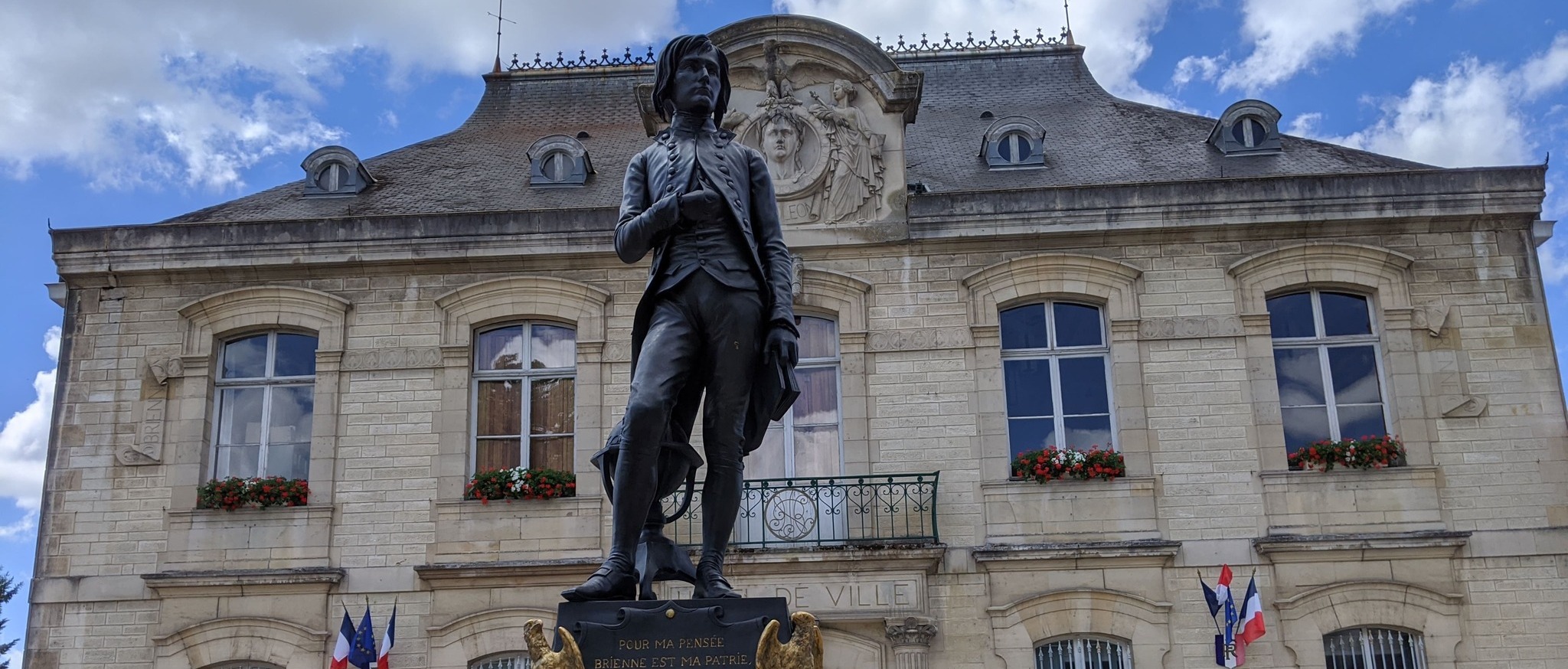
The Aube, the land of Chrétien de Troyes, Bernard de Clairvaux and Hugues de Payns, of Héloîse and Abélard, of the young Bonaparte and Flaubert, of Gaston Bachelard and the Goncourts, of Auguste Renoir…
During the High Middle Ages, the local history of The Aube became one with the national history. Better still, the Aube was the crucible of Western philosophy: Bernard of Clairvaux or Rachimade the image of wisdom and intellectual vitality of Champagne shine accross Europe.
Pierre Auguste Renoir
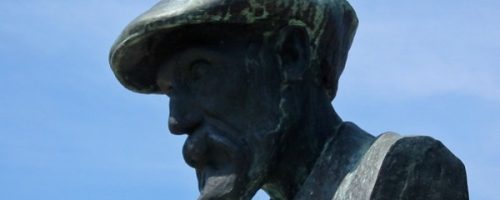
Essoyes, Renoir’s impressionist haven
The artist Pierre-Auguste Renoir, one of the great masters of impressionism, spent some of the most beautiful seasons of his life in Essoyes. It was here that he found the atmosphere, the setting, the lights and the colours for his paintings. Just like this renowned artist, come and immerse yourself in the superb landscapes, discover the bucolic atmosphere of the village of Essoyes and visit, among other things, the artist’s studio.
A favourite village for the artist
Brought here by his wife, Aline Charigot, whos was born here, Renoir soon embraced this beautiful wine country. After a few brief stays followed by more regular visits, the couple acquired a house in 1896. Renoir had a studio built at the bottom of the garden where he worked tirelessly.
He found his inspiration in the attitudes of his sons, in family scenes but also in the village and its surroundings. It was also in Essoyes that Renoir met his favourite model: Gabrielle. From 1888 to 1919, he regularly came to Essoyes and his walks in the countryside were a real source of inspiration which can still be felt today. A visit full of colourful touches!
Rachi
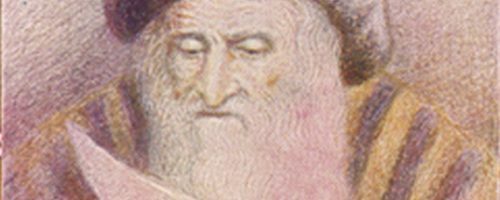
At that time Rashi wrote his work dedicated to commentaries on the Bible and the Talmud, in which he gave clear and concise explanations that made him successful. He was also the author of Responsa that is, answers given to consultations of the French and Rhineland Jewish communities on practical issues. He wrote and commented on “Piyutim”, Hebrew poems intended for liturgy and prayer. Rashi’s work led to the development of Hebrew culture and increased contacts with Christian intellectuals who used Jewish interpretations of the Bible. The School of Rashi continued long after his death with his descendants adding to his work of commentaries. His successors developed an intense intellectual activity in the 12th and 13th centuries. For more information, click here
Gustave Flaubert
Gustave Flaubert was born in Rouen, but his father was born in Maizières la Grande Paroisse. Although Flaubert’s father later moved to Rouen, his sister remained in Nogent after her marriage to François Parain. Gustave Flaubert’s affection for his uncle Parain never wavered. He made many visits to the little town and from the age of 11, Gustave Flaubert spent his holidays in the Parain household.
The family home still exists, an old bourgeois house on the corner of Rue de l’Auditoire and Rue Saint Epoing.
It was probably because he knew this little town on the banks of the Seine so well that he made it one of the focal points of his novel L’Education Sentimentale.
Thus 7 chapters out of the 17 in the novel are dedicated in part or in full to Nogent sur Seine. L’Education Sentimentale features the town, its monuments, its landscapes and its inhabitants. He gives long descriptions of it that are, so precise that they are both precious historical witnesses and an invitation to discover the heritage of Nogent. With the book in hand, you can walk through the town and find the setting chosen by the author for the provincial exile of his hero, Frédéric Moreau. In the old Pêcherie district, for example, you will find the Maison de la Turque. An old half-timbered house that plays a key role in the novel.
Flaubert made it a house that fascinates his main protagonist .
Monsieur Roque’s garden, on the banks of the Seine, is the area of Nogent with the longest and most precise description.
The Hotel du Cygne de la Croix is also extensively described. Along with the church of Saint Laurent, it is one of the few places described by Flaubert that have remained intact.
Some characters in the book are real or fictional Nogent residents, notably Louise Roque, the young provincial passionately attached to Frédéric Moreau. Mrs Moreau, Frédéric’s mother, also lived in Nogent.
Towards the end of his life, Flaubert travelled back to the Aube to visit his correspondent and friend Mme Roger des Genettes who lived in Villenauxe la Grande.
Camille Claudel
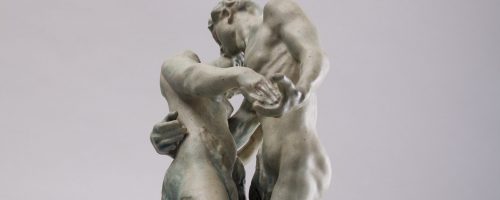
Camille Claudel was born on 8 December 1864 in Fère en Tadernois to Louis Prosper Claudel and Louise Athanaïse Cerveaux. The Claudel family moved to Nogent sur Seine in 1876 where Louis Prosper was appointed mortgage registrar. They stayed there until 1879.
At this time, Camille was already spending her free time kneading clay and showed a definite aptitude for modelling.
Nogent sur Seine was a small provincial town, a bourgeois sub-prefecture with a few thousand inhabitants. There was little artistic life. However, the sculptor Marius Ramus, originally from Aix en Provence, settled there in 1859. And Paul Dubois, the son of one of the notables, often returned there while pursuing a career as a sculptor in Paris, where he became deputy curator of the Musée du Luxembourg, while teaching at the Ecole Nationale des Beaux Arts before becoming its director.
A young artist also often returned to Nogent. He was discovered by Marius Ramus and finished his artistic studies at the Ecole Nationale des Beaux Arts in Paris. His name was Alfred Boucher. Having become famous, he passed on his art to Camille Claudel, first in Nogent, where the Claudel family lived from 1876 to 1879, then in Paris until 1883. When he left for Italy, he introduced her to Rodin, who is the second person to reveal Camille’s genius through confrontation and passionate love.
On 26 March 2017, the Camille Claudel Museum opened, paying tribute to the internationally renowned artist who originated from Nogent-sur-Seine. All the stages of Camille Claudel’s career are represented in this new museum: from her beginnings in the naturalist vein with her first mentor, Alfred Boucher, to the period of apprenticeship and then total connivance with Rodin, of which she became the closest collaborator. In this museum you can also discover the works of Paul Dubois and Alfred Boucher.
Heloise and Abelard
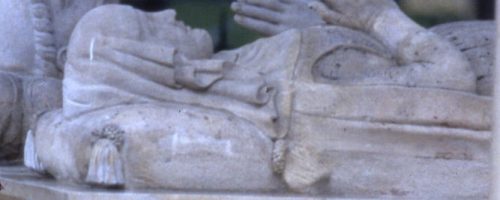
A few kilometres south-east of Nogent sur Seine in the commune of Quincey are the remains of the ancient Abbey of Paraclet. This monastery was the scene of one of the most beautiful and famous love stories of the Middle Ages, that of Heloise and Abelard. The story of Heloise and Abelard begins in Paris. The handsome professor meets Heloise: a passion unites them. Soon Heloise is pregnant. Abelard wants to marry her (clerics could normally marry, as they were not priests). But the young girl refuses, in the name of absolute love, which leads her to let Abelard dedicate himself to his teaching.
Heloise’s uncle, Canon Fulbert, does not understand the situation. He sees only two things: the dishonour of his niece, the fault of Abelard. Together with two or three accomplices, he broke into Abelard’s room one day, and subjected him to the horrible mutilation that we know.
The drama did not arouse a smile in Paris, or even in Europe. Abelard is celebrated as a martyr, and the reputation of his teaching only grows.
Abelard took his vows in 1119; Heloise entered a convent after giving birth to a boy named Astrolabe.
In 1129, Abelard founded the Abbey of Paraclet in the Aube (near Nogent sur Seine), on the site of an oratory that he had created and named “Paraclet” – the name of the third person of the Trinity. Heloise was the first abbess.
When Abelard died in Cluny in 1142, Heloise had his body taken to the Paraclete.
She joined him in his tomb in 1164.
The two lovers were buried for seven centuries in the church of Paraclet before the Revolution brought them back to Paris in a joint burial.
Jules and Edmond de Goncourt
The Goncourt brothers, Jules and Edmond, visited the small town of Bar sur Seine several times between 1834 and 1878. They generally came in early autumn, it was the time of hunting, of the grape harvest, of the hills and forests paved with marvellous colours… In their renowned Journal they dedicated some fifty pages to Bar sur Seine; every summer they came to “re-immerse themselves in the beastly health of the countryside”. Every year they went down to the rue du Four des Bordes (today 11 and 13, rue Victor Hugo) to the home of a rich landowner, Léonidas Labille, who had married their cousin Augusta in 1834. Beyond family observations, it was rural France that was taking shape before their eyes. They took advantage of their summers in Bar sur Seine to enjoy the delights of food they visited the surrounding area (the Château de Chacenay, Vendeuvre, Les Riceys), and were fascinated by the shimmering river Seine “which seems to have been caressed by Corot’s brushes”. Edmont ended his visits eight years after his brother’s death.
Marguerite Bourgeoys
Marguerite Bourgeoys was born on 17 April 1620 in the city of Troyes in France. In 1640, she joined the Sisters of the Religious Congregation Notre-Dame de Troyes Teachers. This was led by the sister of Paul de Chomedey de Maisonneuve (founder of Ville Marie), Louise de Chomedey de Sainte-Marie. This was where she heard about the new city of New France. In 1652, recruited by Maisonneuve himself who was in search of a teacher, she decided to join the settlers of Ville Marie. In 1653, his ship left his homeland for New France. On her arrival in Ville Marie, she was given several responsibilities, including welcoming and settling the “filles du roi” the King’s daughters recruiting and training new teachers. She founded the Congregation of Notre-Dame de Montréal, a religious community dedicated to teaching, inwhere she was the Mother Superior. In 1658, she opened the first school in Ville Marie in a stable. Marguerite Bourgeoys died on January 12, 1700, leaving behind her a work well underway several successors to continue it. She was canonised by Pope John Paul II in 1982.
Emile Coué
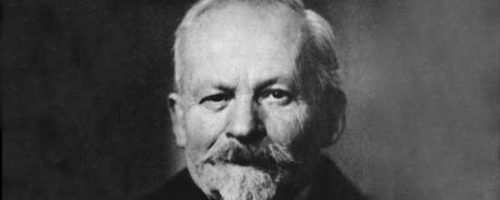
Be positive with Emile Coué! Emile Coué was a French psychologist and pharmacist, author of a method of healing and personal development (the Coué method) based on autosuggestion. He explored new and innovative ways within modern psychology and was a forerunner of behavioural psychology and positive thinking. Born in Troyes in 1857, Emile Coué was famous worldwide at the age of sixty thanks to his famous “method” which has now fallen into disuse. But is it really as paltry as it sounds? “Every morning, in every respect, I am feeling better and better”.
Napoleon Bonaparte
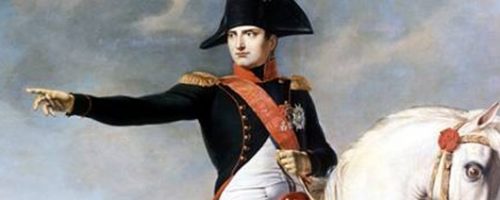
The admission of the young Bonaparte to the school of Brienne was the outcome of many steps: apart from the guarantee of the Governor of Corsica, the Count de Marbeuf, his parents had to provide a certificate of poverty and prove four quarters of nobility.
Legend has it that it was in Brienne that his military genius was revealed on the occasion of the well-known snowball fight immortalised by Abel Gance in his renowned film about Napoleon.
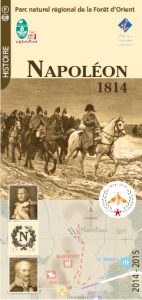 Napoleon was a pupil at Brienne from April 1779 to August 1784 and whatever the rigours of those five years, he was to retain a grateful memory of this little town throughout his life.
Napoleon was a pupil at Brienne from April 1779 to August 1784 and whatever the rigours of those five years, he was to retain a grateful memory of this little town throughout his life.
The French Campaign brought Napoleon back to Brienne for the last time at the end of January 1814, where he fought two of the last battles of his long military career, that of Brienne (29 January 1814) and two days later, 5 kilometers away, that of La Rothière (1 February 1814).
25 landmarks of the French campaign Napoleon
In exile in Saint Helena, he did not forget the city of his youth, which he put in his will for the sum of one million francs, the sum was used, among other things, to restore the Hôtel de Ville.
Bernard of Clairvaux
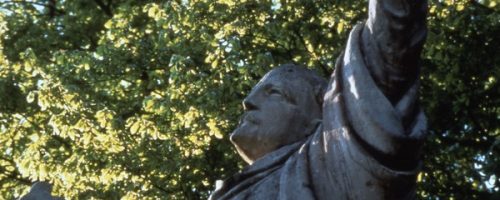
After a first wooden building in 1115, Bernard commissioned the stone buildings built in 1135, which were to be the standard model for the Cistercian Abbey, Clairvaux II.
Clairvaux’s success was such that it led to the foundation of many new abbeys, which made the entire Cistercian order shine. At the time of Saint Bernard’s death, the order had more than 345 monasteries in 12 European countries, strongly organised around a common rule, the Charter of Charity.
The Abbey of Clairvaux had 800 monks and lay people; its economic power was considerable, 78 monasteries depended directly on it and the illustrious Abbot established it as the religious capital of the Western world for a quarter of a century arbitrating between kings and lords, making bishops and popes, reigning over dogma and politics.
He became one of the most influential figures in Christendom and was present at the Council of Troyes in 1128, where he inspired the rule of the Templar Order and spoke of the “Knighthood of Christ”.
Involved in the theological debates of his time, a great traveller, and writer of the statutes of the Order of the Templars, he was one of the great figures of the Christian West when he died in 1153. The success of the abbey was such that it led to the foundation of many new Abbeys which made the Cistercian order shine.
Chrétien de Troyes
In the 12th century, the Champagne region shone with a thousand lights. The economic boom of the Champagne Fairs was accompanied by an intellectual effervescence. It was in this context that Chrétien de Troyes became one of the greatest writers of the French Middle Ages, belonging to the realm of universal literature. Who today has not heard of Merlin the Enchanter, the love story of Lancelot and Queen Guinevere, Perceval or the Grail? He combined the influence of ancient letters and the courtly ideal with the Celtic tradition. The writings of Chrétien de Troyes remain above all adventurous quests. In each of his works, adventures abound and the scenes take place in a mysterious atmosphere. The knight’s mission is to dispel evil spells and enchantments to restore the courtly order. The influence of Chrétien de Troyes is considerable, since he was credited with having initiated courtly literature in France. , establishing his work as fiction.
Gaston Bachelard
Gaston Bachelard was born on 27 June 1884 in Bar sur Aube, 59 rue Nationale, to a father who was a shoemaker and a mother who was a tobacconist. Thus the name Bachelard is as inseparable from Bar sur Aube as Proust from Combray, Vallès from Velay, Ramuz from his country of Vaud. Bachelard’s memories of his birthplace and his childhood were to remain with him throughout his career, particularly in his books on imagination and reverie. He had an unusual career: initially a postal worker, he took a degree in science and became a professor of physics and chemistry in Bar-sur-Aube.
In 1922 he passed the agrégation in philosophy and taught this discipline at the Faculty of Dijon before becoming a professor at the Sorbonne until 1954.
If Gaston Bachelard is an epistemologist, that is to say a philosopher and critic of the sciences, the methods and foundations of which he questioned, he was also attentive to the poetic and imaginary domain.
All his life he remained attached to his native region: “If I want to study the life of water images, I must therefore give back their dominant role to the river and springs of my country. I was born in a country of streams and rivers, in a part of the hilly Champagne region, in the Vallage, named after the large number of its valleys.
During holidays, he met up with his friend Dr Giroux: “the two of us would go up the hill of Sainte Germaine and walk around the plateau, the forests, in particular the Bois des Dames, while chatting”. Bachelard evoked memories of the past, sketched out study projects and expressed his regrets: “I would like to have a hut in the woods, with a white wooden table and I would write my forest…”. He loved trees so much! He knew all their secrets… They would stop in a village – often in Bergères – to go to the modest café to drink a bottle of local wine.
In 1961 he was awarded the Prix National des Lettres for “La Flamme d’une chandelle”; he died on 16 October of the following year.
Hugues de Payns
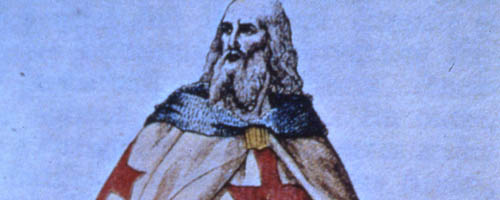
The Order of the Temple, born in Jerusalem, has its origins in the Aube department. Indeed, a knight named Hugh de Payns born in the Château de Payns around 1070 (near Troyes.). It was at this time that the Turks invaded Jerusalem. In 1095, Pope Urban II convened a council in which he urged believers to rescue the tomb of Christ from the hands of the Turks. A few months later, several armies set out from the West (probably with Hugues de Payns). After three years of ruthless warfare, the Crusaders took Jerusalem on 15 July 1099. However, the small kingdom of Jerusalem that was created was not populated enough, and most of the pilgrims who came were regularly attacked and massacred. Faced with these acts of barbarism, Hugues de Payns and his companion Godefroy de Saint Omer decided to create a militia dedicated heart and soul to the Christian cause (1119). In 1127, Hugues de Payns asked the Pope to convene a council to render the foundation of the Order of the Temple official. That same year, Count Thibaud of Champagne donated an estate that he owned. In 1129, the order received the long-awaited recognition by the authorities of the Kingdom and of Christendom. Hugues de Payns probably died of natural causes in 1136.
Del Barbier, known as Le Florentin
Dominique Del Barbier, known as Le Florentin (1501-1572) was born in Florence in 1501(06?); a pupil of Primaticcio, he followed him to Fontainebleau (near Paris), where he took part in the decoration of the château for Francis I; he worked as a sculptor, engraver, painter, architect and mosaicist. Upon the death of François I in 1547, he moved to Troyes, where he participated actively in the decoration of the new buildings that the fire of 1524 had destroyed. In 1548, he was in charge of organising the preparations for the visit of Henry II and Catherine de Medicis, then in 1563 those for the visit of Charles IX. He then worked with François Gentil. In 1549, the city of Troyes commissioned him to build the choir screen of the Collegiate Church of Saint Etienne (no longer in existence), which he built with Gabriel Favereau, his son-in-law. In addition to his contributions to the architecture of the city, Dominique Le Florentin contributed to Troyes with numerous testimonies of his mastery of sculpture. Today his works can be seen in the Church of Saint Pantaléon, the statue of Saint Jacques (from the Collegiate Church of Saint Etienne) and those of Faith and Charity.
Pierre and Nicolas Mignard
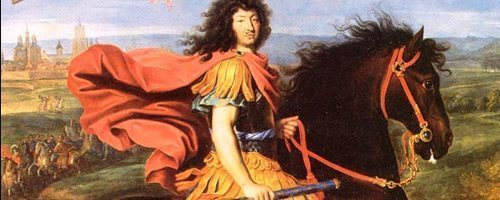
Pierre Mignard, known as Mignard le Romain(Troyes, 1612 – Paris, 1695). In Troyes, he worked for a sculptor named François Gentil. In Paris he was Simon Vouet’s pupil Following a 20 year stay in Rome, he made the portrait of Louis XIV for the Infanta of Spain. Impressed the King, favoured him: he was ennobled and named his first painter. Rival of Le Brun, he succeeded him at the Royal Academy. Mignard divided his career between portraits and large decorative compositions. He painted, particularly, at the Château de Versailles. In the Church of Saint Jean de Troyes, the high altar with an alterpiece dates from 1667. The painting of the Baptism of Christ is the work of Pierre Mignard.
Nicolas Mignard (Troyes, 1606 – Paris, 1668). He left for Rome with his brother Pierre, known as the Roman, Nicolas Mignard stayed there for only two years, which was enough for him to assimilate the lessons of the Carracci. In 1637, he moved to Avignon, where he spent most of his career, and was then summoned by Louis XIV for his architectural talents. He was also a specialist in etchings (an engraving obtained by applying nitric acid mixed with water over a copper plate).
Eugène Belgrand
Eugène Belgrand was born in 1810 in Ervy le Châtel. As a young engineer at the Ponts et Chaussées, he designed the water supply network for the town of Avallon at the request of the prefect of Yonne. This prefect was none other than Haussmann, who asked him to his side when Napoleon III entrusted him with the Paris construction site. He asked him to design the entire drinking water network that would supply the capital and to set up the sewers that would evacuate the waste water. This involved building a 154 kilometre network with a difference in level of only 120 metres. He chose the Armentières spring (halfway between Vulaines and Saint Benoist sur Vanne). Work began in 1854 and was completed only twenty years later. To cross the valleys, opted for the siphon technique over the Roman-style aqueduct. The network designed by Eugène Belgrand is still in operation, although it has been extended and doubled. The engineer from Ervy is also the father of the sewage network: a network whose design follows the pattern of the streets of Paris, using their names and numbers.
